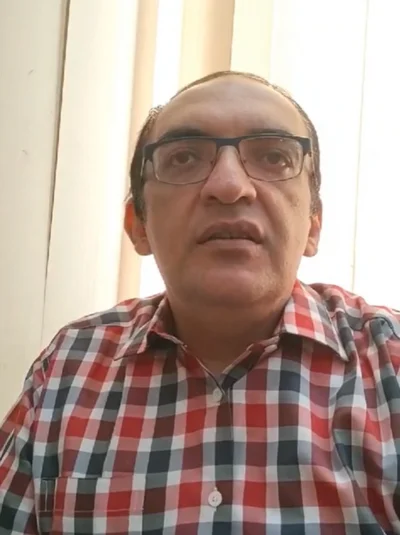Introduction
The Metaverse has quickly become a transformative concept, merging digital environments with social, economic, and entertainment aspects that redefine online experiences. However, for these immersive worlds to feel truly real, they must mimic physical reality. One of the most critical aspects of creating lifelike virtual experiences in the Metaverse is real-time physics. Real-time physics allows objects to behave as they would in the real world, enabling dynamic interactions between players, environments, and digital assets. This blog explores how real-time physics is implemented in Metaverse games and its impact on game development.
The Importance of Real-Time Physics in Metaverse Games
Real-time physics simulation is crucial for creating believable and engaging interactions in virtual worlds. In Metaverse games, players expect that objects will react naturally when they touch, move, or collide with other elements. The seamless integration of physics-based interactions is a key element of Metaverse Game Development, ensuring that every movement and interaction within the virtual space feels fluid and realistic.
By simulating forces like gravity, friction, and mass, real-time physics makes virtual objects move, fall, or collide in ways that reflect real-world behavior. Without accurate physics, players could feel disconnected from the game, as their actions would lack the expected cause-and-effect responses.
Physics Engines Powering the Metaverse
At the heart of real-time physics simulation in Metaverse games are physics engines. These engines handle complex calculations that make interactions between virtual objects possible. Developers working in Metaverse Game Development Services rely on advanced physics engines like NVIDIA PhysX, Havok, or Unity’s built-in physics engine to achieve realistic movement and interaction. Each engine offers unique capabilities that allow for varying degrees of realism and performance optimization, making them ideal for different types of virtual environments.
Physics engines calculate everything from how a player’s avatar walks to how objects break apart when struck. By managing these processes in real time, the Metaverse can create dynamic and engaging experiences where players can feel the weight, impact, and speed of objects they interact with.
Transform Your Gaming Experience Today!
A Metaverse Game Development Company specializes in creating immersive and engaging metaverse games for online and offline platforms.
Challenges in Implementing Real-Time Physics
While real-time physics is crucial for making Metaverse games feel lifelike, its implementation presents several challenges. One of the most significant issues is performance. Real-time physics simulations are computationally intensive, requiring significant processing power, especially in large-scale multiplayer environments. Developers need to balance the complexity of the physics system with the game’s performance to ensure smooth gameplay.
For Game Development Services, another challenge is network synchronization in multiplayer settings. Since the Metaverse is often a shared experience, all players must see the same physics interactions happening at the same time. Synchronizing these actions across multiple devices, each with its processing speed, can introduce latency issues or inconsistencies. Developers must address these problems through optimized code and powerful server infrastructures.
Enhancing Immersion with Advanced Physics Systems
To truly capture the attention of players and make them feel as though they are inside the Metaverse, advanced physics systems can be utilized. These systems go beyond simple object movement and collision detection, incorporating more complex aspects such as fluid dynamics, particle simulations, and soft-body physics.
Fluid Dynamics and Particles
In Metaverse games, players may encounter realistic water effects, flowing lava, or dust particles floating through the air. These effects are made possible through the simulation of fluid dynamics and particle systems. Integrating these advanced simulations into a Metaverse Game Development Company’s projects allows for a deeper level of immersion. For example, a player might swim through virtual water that ripples and splashes based on their movements, making the game environment feel more responsive and alive.
Soft-Body Physics
Soft-body physics simulates deformable objects that bend, stretch, and compress in response to forces. Imagine players interacting with virtual pillows, balloons, or even characters with squishy skin. These deformable objects add another layer of realism, making the virtual world behave as closely as possible to the real one. For Blockchain Game Development teams, integrating soft-body physics can be an exciting opportunity to enhance virtual item interactions and drive engagement through more realistic, tangible objects.
The Role of AI in Real-Time Physics
AI is an integral component of Metaverse Game Development Services, enabling more efficient real-time physics simulations. Through machine learning algorithms, AI can predict and optimize the behavior of objects, reducing the computational load on game servers and devices. This approach allows developers to create more intricate and large-scale physics systems without sacrificing performance.
For instance, AI can be used to analyze real-time player movements and adjust physics-based interactions to feel more natural. AI Development Services can help predict the outcome of complex interactions, such as the collision of multiple objects, ensuring that the game runs smoothly even in chaotic situations.
AI-enhanced physics systems are also useful for generating adaptive and interactive environments, where game objects change in response to player actions, creating a more immersive experience for users.
Level Up Your Metaverse Game! Get Expert Development Services Now!
At SDLC Corp, we create immersive metaverse games that engage players on any platform.

Blockchain and NFT Integration in Physics-Based Interactions
The Metaverse isn’t just about realistic interactions; it’s also about creating virtual economies where users can own, trade, and interact with digital assets. Integrating blockchain technology and NFTs (Non-Fungible Tokens) into real-time physics simulations offers exciting opportunities for both players and developers.
In NFT Game Development, real-time physics can be applied to digital assets that are unique and owned by players. Imagine a player owning a digital car as an NFT, where the car’s speed, weight, and handling are governed by real-time physics. Players can use these cars in virtual races, where the physics simulations directly impact their performance.
Blockchain technology allows developers to record these unique physical interactions on a decentralized ledger, ensuring that no two items behave exactly the same. For instance, a sword in one player’s inventory might have slightly different physics properties compared to another player’s, making the NFT asset truly one-of-a-kind.
Blockchain Game Development also offers an extra layer of security for digital assets in the Metaverse. By using blockchain, developers can ensure that assets like skins, weapons, or vehicles are securely stored and cannot be tampered with, adding value and trust to the virtual economy.
Multiplayer Experiences and Real-Time Physics
Multiplayer games are at the heart of the Metaverse, where users from around the world can interact with each other in real time. However, implementing real-time physics in multiplayer games presents unique challenges. For Game Development Companies, one of the key issues is ensuring that all players experience the same physics-based interactions simultaneously. This is often referred to as “physics synchronization.”
Physics synchronization in multiplayer games involves ensuring that actions like throwing objects, colliding with other players, or interacting with the environment occur in the same way for everyone involved. Lag or desynchronization can ruin the immersion, making real-time physics one of the most difficult aspects to get right in a multiplayer setting.
To overcome this challenge, developers must optimize network code and use dedicated servers to handle physics calculations. Ensuring that these servers can efficiently process large amounts of data in real time is crucial for a seamless multiplayer experience.
Real-World Applications and Future Potential
The use of real-time physics in Metaverse games is not only changing the gaming landscape but also influencing industries beyond entertainment. For example, architects can use physics-based simulations to build and test virtual models in a Metaverse-like environment. Similarly, engineers could simulate product designs and prototypes using the same physics engines that power Metaverse Game Development.
As technology advances, the potential for real-time physics in the Metaverse will only grow. We can expect more sophisticated simulations, larger-scale environments, and even more realistic interactions as physics engines continue to evolve. The Metaverse of the future could be so immersive that players may have difficulty distinguishing it from the physical world.
Explore our affordable Metaverse game development services
We design innovative metaverse games at SDLC Corp that redefine immersive experiences across platforms. Partner with us to craft something truly unforgettable.

Conclusion:
Real-time physics is a vital element in making Metaverse games more immersive and realistic. From dynamic object interactions to large-scale fluid and particle simulations, the implementation of physics systems is pushing the boundaries of what’s possible in virtual environments. By overcoming challenges such as performance optimization and physics synchronization, Metaverse Game Development Services are creating games that not only captivate players but also open new avenues for innovation.
Whether you’re developing multiplayer Metaverse games, integrating NFT Game Development, or exploring the potential of Blockchain Game Development, real-time physics will be a cornerstone of the future. As more Game Development Companies continue to explore and implement these technologies, the line between virtual and physical reality will continue to blur, offering players an ever-expanding world of possibilities.












